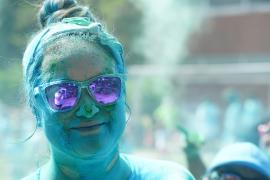I’m ardently proud of the high-quality camp staff experiences that professional camp directors strive to offer young adults each season. Full of career-enhancing and life-benefitting skills, a summer spent working at camp is chock-full of core social and emotional learning.
However, before a young person can take full advantage of the social and emotional learning skills that camp staff experiences offer, they may need to first strengthen their basic physical, mental, emotional, and social health. While historically young adulthood was considered a time of optimal health, trends today point to troubling levels of obesity and unhealthy lifestyle characteristics during these critical years when a young person is developing their self-identity and independence. Additionally, more often than we may expect, young adults are impacted from the effects of childhood adversities such as parental divorce, neglect, or abuse.
Consider these trends. The prevalence of obesity in young adults continues to be seriously concerning at 36 percent (Hales, Carroll, Fryar, & Ogden, 2017). Further, in a CDC study on sleep duration, a third of young adults aged 18 to 24 are getting less than seven hours of sleep nightly, and over 75 percent of high school seniors are getting less than eight hours of sleep a night (Centers for Disease Control and Prevention, 2014). Unfavorable shifts in diet, sleep, and physical activity contribute to these challenges, but so do shifts in mental health. More than 30 percent of high school students reported experiencing persistent feelings of sadness or hopelessness nearly every day for two weeks or more in the past year (Youth Risk Behavior Surveillance System, 2018). A recent National Institute of Health study underscored the increasing prevalence of depression in young adults with little change in mental health treatments, resulting in a growing number of youth with untreated depression (Mojtabai, Olfson, & Han, 2016).
This summer, as camp professionals, we have an opportunity to focus on improving the physical, emotional, social, and cognitive health and wellness of our staff community. At camp, we can offer staff immersive opportunities for a caring, supportive, and social community; a healthy diet; regular, vigorous exercise; eight hours of sleep most nights; and improved cognitive health too. In Psychology Today, Chris Bergland highlights that brain structure and cognitive function are improved by these daily habits: physical activity, openness to experience, curiosity and creativity, social connections, mindfulness, reduced stress, brain-training games, and getting enough sleep (Bergland, 2014). These are habits of camp.
In most camps, social media and digital relationships are de-emphasized in favor of real human connections and deeply engaging community. In her Camping Magazine article Bunks Are Good for Brains: The Neuroscience of Sleepaway Camp, Tina Bryson, PhD, reminds us that when we create emotionally and physically safe communities at camp, it engages and builds the middle prefrontal cortex. The stronger the culture of psychological safety, trust, and friendship, the greater the buffer that is built against mental, emotional, and social health struggles. Strengthening the middle prefrontal cortex helps us regulate our body and emotions; build greater self-awareness, intuition, and empathy for others; communicate effectively; overcome fear; and become more resilient and flexible. According to Bryson, it’s what is needed for a successful life with good emotional and mental health, meaningful relationships, and the conscientiousness to make things happen in the world (Bryson, 2014).
Thank you for your leadership and commitment to developing physically and emotionally safe camp cultures that inspire lifelong health and wellness and lead to greater social and emotional learning skills for both campers and staff.
References
- Bergland, C. (2014, March 12). Eight habits that improve cognitive function. Psychology Today. Retrieved from psychologytoday.com/us/blog/the-athletes-way/201403/eight-habits-improve-cognitive-function
- Bryson, T. P. (2014, January). Bunks are good for brains: The neuroscience of sleepaway camp. Camping Magazine. Retrieved from ACAcamps.org/resource-library/camping-magazine/bunks-are-good-brains-neuroscience-sleepaway-camp
- Centers for Disease Control and Prevention. (2014). Short sleep duration among US adults. National Center for Chronic Disease Prevention and Health Promotion. Retrieved from cdc.gov/sleep/data_statistics.html
- Hales, C. M., Carroll, M. D., Fryar, C. D., & Ogden, C. L. (2017, October). Prevalence of obesity among adults and youth: United States, 2015–2016. NCHS Data Brief, 28. Retrieved from cdc.gov/nchs/data/databriefs/db288.pdf
- Mojtabai, R., Olfson, M., & Han, B. (2016, December). National trends in the prevalence and treatment of depression in adolescents and young adults. Pediatrics, 138(6).
- Youth Risk Behavior Surveillance System. (2018). Youth risk behavior survey: Data summary & trends report 2007–2017. CDC. Retrieved from cdc.gov/healthyyouth/data/yrbs/pdf/trendsreport.pdf


